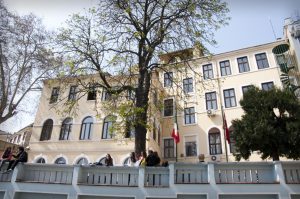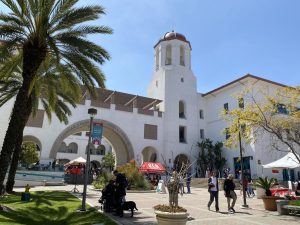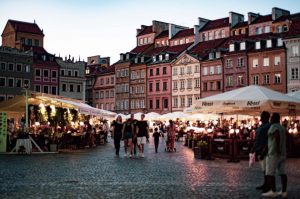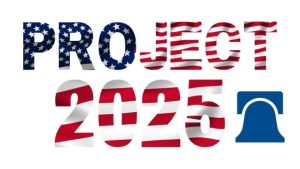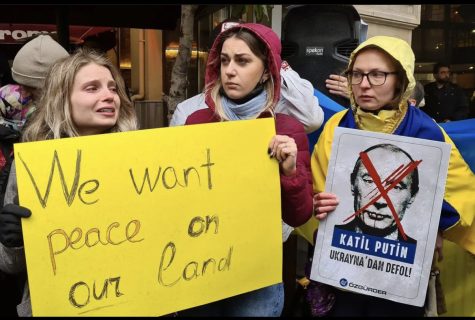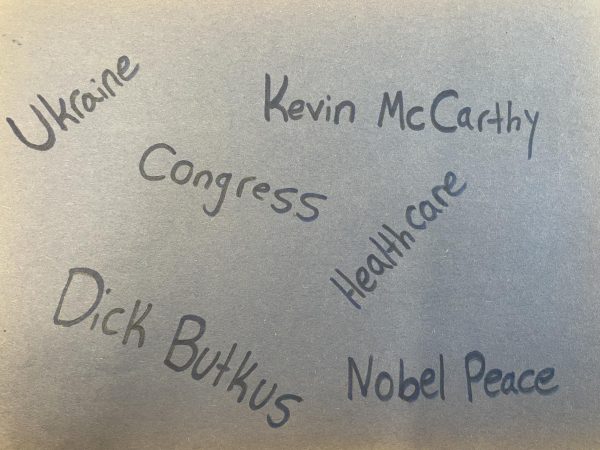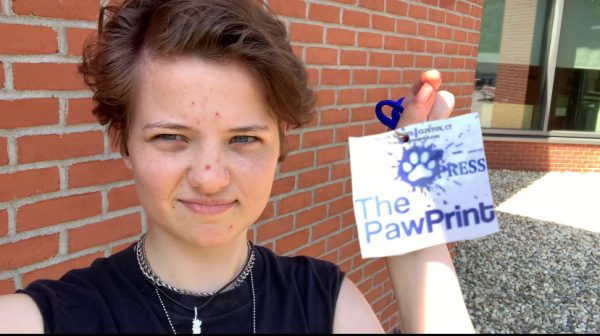Introduction
Before I start throwing information at you, I’d like to qualify myself: I’m half Polish, Slovak (Czechoslovakian), Ukrainian, and Russian. While some of my family in Poland and Czechia are still alive, I’ve never met them, and my Ukrainian family mostly died in World War II, in the Holocaust, or the Holodomor.
For the past two years, I’ve extensively studied the world politics and history of the war, as well as the culture and people of Ukraine.
In short, I consider myself a reliable source because I’m informed, and it’s personal.
I started my research for this article by interviewing Morgan students to find out what they already knew or thought they knew about Ukraine and the war and based my article on their responses.
Ukraine is Not a Part of Russia
Before the war started, I presented research on the conflict at the border of Russia and Ukraine to my world history class. More than half the class had never heard of Ukraine before the presentation, and almost no one could point to it on a map. I still hear people talking about Ukraine and saying things like “Isn’t it just part of Russia? Didn’t it used to be?” or “They speak Russian though, don’t they? So they are Russians.” There is all sorts of misinformation born out of a mixture of the Russian propaganda machine and a total lack of education on Eastern Europe in American schools. The majority of history classes are spent on the US, Western Europe, and Ancient Greece or Rome.
Ukraine hasn’t been a part of Russia since the 9th century when the two existed as a joint culture known as Kievan’rus. Throughout the 12th to 14th centuries, the majority of Eastern Europe was divided into various cultures and kingdoms, collectively known as Rus. These kingdoms later evolved into separate countries, many of which still exist today, though some have split or combined. Borders have evolved through wars and conflicts.
It’s true that Ukraine was part of the USSR, starting at its formation in 1922. However, the USSR was not Russia, rather, it was the heart of the USSR and head of its government. As a whole, the USSR was a collection of countries and territories, with many functioning as satellite states. Russia has been periodically invading Ukraine since the two have been around, but, in the 1920s and 1930s, there was a deliberate genocide of the people and culture of Ukraine in an attempt to replace the land’s population with Russians. For example, beginning in the 1920s and continuing throughout the 1930s, a genocide of Ukrainian authors, poets, and artists began, known as The Executed Renaissance. The genocide coincided with one of the first Ukrainian language bans, in which all government and official business was conducted entirely in Russian. Books in Ukrainian were burned or taken out of schools and libraries, and children caught speaking Ukrainian in school were punished. High-paying jobs and universities were exclusive to Russian speakers, which was a major factor in language assimilation. This is the reason that many Ukrainians still speak Russian as their first language today, and many learn Ukrainian as their second.
Then, in 1932, the same year the first language ban was introduced, the Holodomor (cold sea) Genocide began. The Holodomor was a man-made famine created by Joseph Stalin that claimed the lives of 3.9-7 million people. It was designed to kill as many ethnic Ukrainians as possible and replace them with Russians. As Ukrainians starved and died in the streets, many ethnic Russians moved in, repopulating the country with a Russification culture.
“Being Ukrainian means to be constantly in a state of proving your right to exist.”
-Volodymyr Vynnychenko, first President of Ukraine.
When the USSR fell in 1991, some countries formerly part of the union struggled to establish a new government and economy. Ukraine, however, was not one of those countries dependent on Russia, the heart of the USSR. Ukraine had a well-established nationalist movement, with a separate culture and the foundations of a new form of government from what was imposed on them during the days of the Soviet Union. Next door to Ukraine, in Moldova, remained and still remains the last stand of the Soviets: Transnistria. This de facto state still exists along the border of Ukraine and Moldova, in Moldovan territory, and was established in 1990 by a separatist group funded by Russia. For years, Transnistria held no significance, but in the early 2010s, it gained significance as a Russian stronghold and a vitally placed geographical ally. In 2014, when Russia annexed Crimea, a peninsula off of Ukraine, they used the support of Transnistrian Nationalists to do so.
Why Did the War Start?
When I interviewed Morgan students on this, their answers were all over the place. Some said a border conflict, others said to “reclaim” Ukraine as part of Russia, and some simply didn’t know. While the reason for the declaration of war was simple: Russia invading Ukrainian territory and committing horrific war crimes. The true reasoning behind Russia’s invasion is complicated, rooted in centuries of history, imperialism, ignorance, and hatred. I won’t go into full detail, as it would take months to try and unpack, but the shortest way to summarize Russia’s reasoning (ignoring the hundreds of different excuses given by nationalists and the Kremlin) is as imperialism, or the policy of extending a country’s power/influence through diplomacy, or in this case, military force.
“I don’t know how long it will take to stop listening to all the noise. I know we were just living our normal lives, but they took that away from us by calling it salvation. I will never understand war and I will never forget that horrible morning. I will never understand how you can lie so loudly and how you can not trust so quietly.”
-Sasha Anisimova, Ukrainian artist and photographer.
To better understand the modern reasoning of Russian Nationalists, we first have to understand how Russian propaganda works. Going back to our timeline, Russia annexed Crimea in 2014. In 2013, Russian State media and
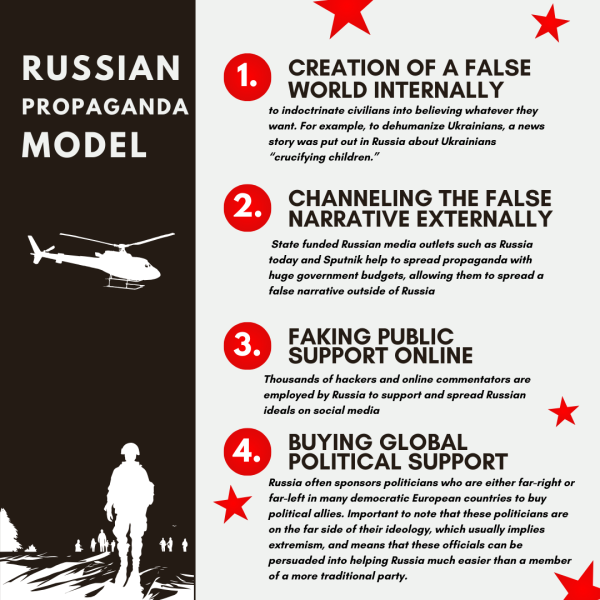
propaganda began to refer to Ukrainians as Nazis during the Euromaidan protests, in which Ukrainians peacefully called for a European future and entry into the EU. For centuries, Ukrainians were painted as lesser, or subhuman by Russian media. This behavior can be common among Eastern European countries in person or on social media, but it’s extreme to continue into state media and official political business. In short: the Russian narrative of Ukraine has redefined Nazism in the country and caused Russian citizens to buy into the idea that all Ukrainians are Nazis. Because of this, it was easy for Russians to believe that Ukrainians were bombing themselves during the early stages of the war when shown images of footage of combat. However, as time progressed, more information was able to seep into Russia via social media (which is heavily censored or banned in the country, but can be bypassed through the use of Virtual Private Networks, or VPNs), but the younger generations are the only ones on these platforms, and the only ones bypassing censorship. Because of this, they are one of the few groups of Russians averse to war. Unfortunately, the younger generations are the first to be drafted. Therefore they get little time to speak out before they’re sent into combat, or they are otherwise not taken seriously by their family due to their age. The Russian youth are less prone to propaganda, but they are in the minority in terms of both population and power. The older generations have been indoctrinated over such a long period of time that they believe that the atrocities and war crimes being committed against Ukrainians are deserved and justifiable, or are otherwise worth it for the gain of their country.
I’m making a lot of generalizations here for the sake of simplicity, so please keep in mind the complexity of the situation.
“Ukrainians had to live through genocide and repressions. Because you can’t just erase imperialisms from Russia. We are NOT Russians, never were and never will be. We fought for our independence for centuries and we will keep it.”
– Yulia (@kryulia7 on Instagram), a Ukrainian art student
Russian Terrorism
Throughout Ukraine, buildings that were once iconic to the country’s capital of Kyiv are now nothing more than rubble. The entire city of Bakhmut no longer exists. Every building was shelled into the ground until it became uninhabitable. Bodies of civilians and soldiers alike lie dead in the streets and in basements, many of whom are unidentified. A family was killed by Russian soldiers while outside trying to cook over a fire to survive. In the early days of the war, people wrote “CHILDREN ” on the sides of their cars while trying to exit the country in hopes that they wouldn’t be stopped or shot, but they were shot either way. Mass graves are dug for those who are killed, though many bodies lie undiscovered or simply covered in the streets; many of whom have no family left to bury them. A mayor was executed and buried in the forest of his town, in a shallow, unmarked grave.
I cannot stand here and say in clear conscience that this is “just Putin’s war” as civilians are killed, their homes stolen from and their belongings sold-off online and at flea markets, by Russian soldiers given no order to do so. They’ve weaponized sexual violence, with those who survive testifying accounts of gang rape, assault, and rape at gunpoint and/or committed against and in front of children. Over 3,000 cases were reported within the first five months. The consequences? More sanctions. No accountability and no justice.
“You couldn’t have not known that was inside your children.”-
-President Volodymyr Zelensky, addressing the mothers of Russian soldiers, following the discovery of a 300+-body mass grave in Bucha, Ukraine.
Resources:
- Ukrainian Army Fund
- This is a way to donate directly to the funding for the Ukrainian Army through the National Bank of Ukraine
- UN Crisis Relief Fund
- Humanitarian aid fund for crisis relief in Ukraine
- United24 Media
- A great source for information on the war
- HYPATIA
- This is a magazine I created in 2022 at the start of the war that goes into further detail on other aspects of the war, Russia-Ukraine relations, politics, and personal accounts.

